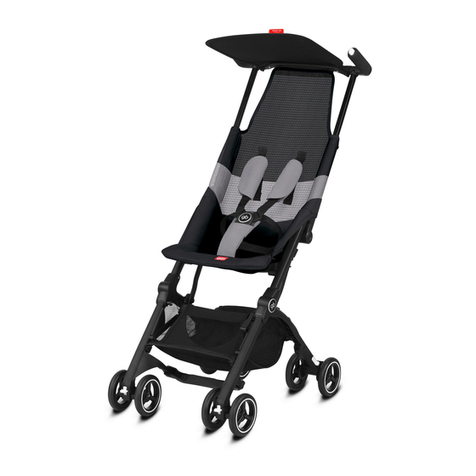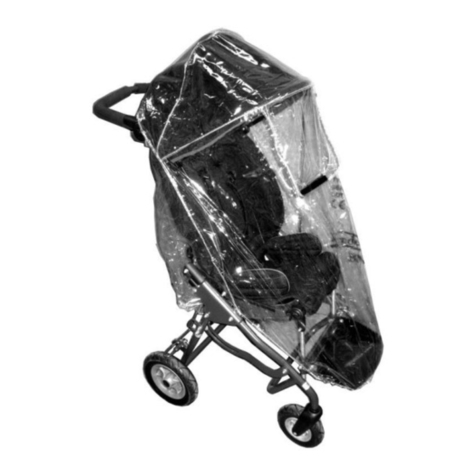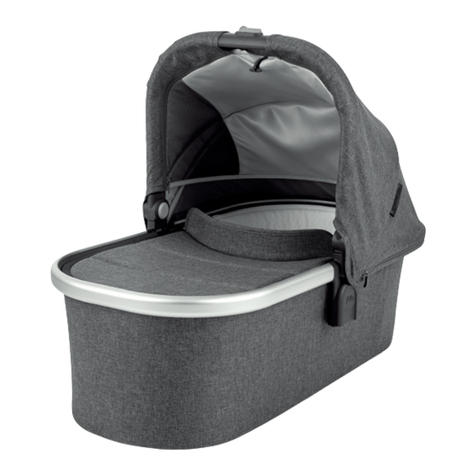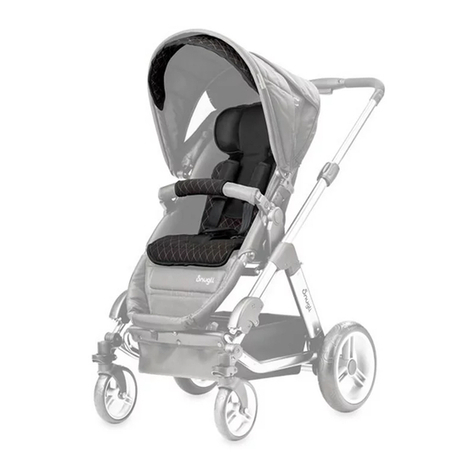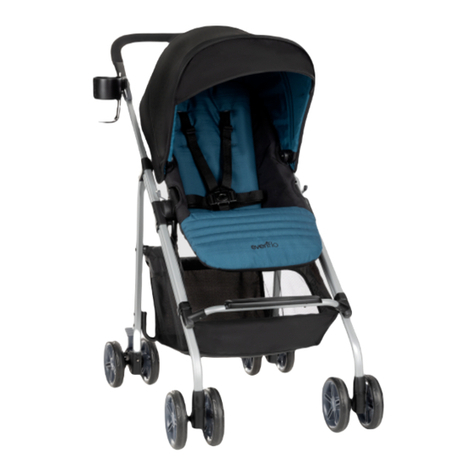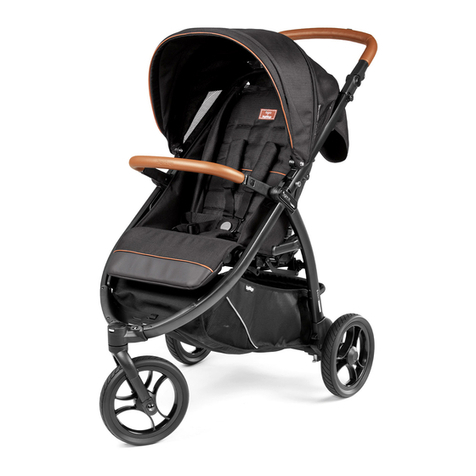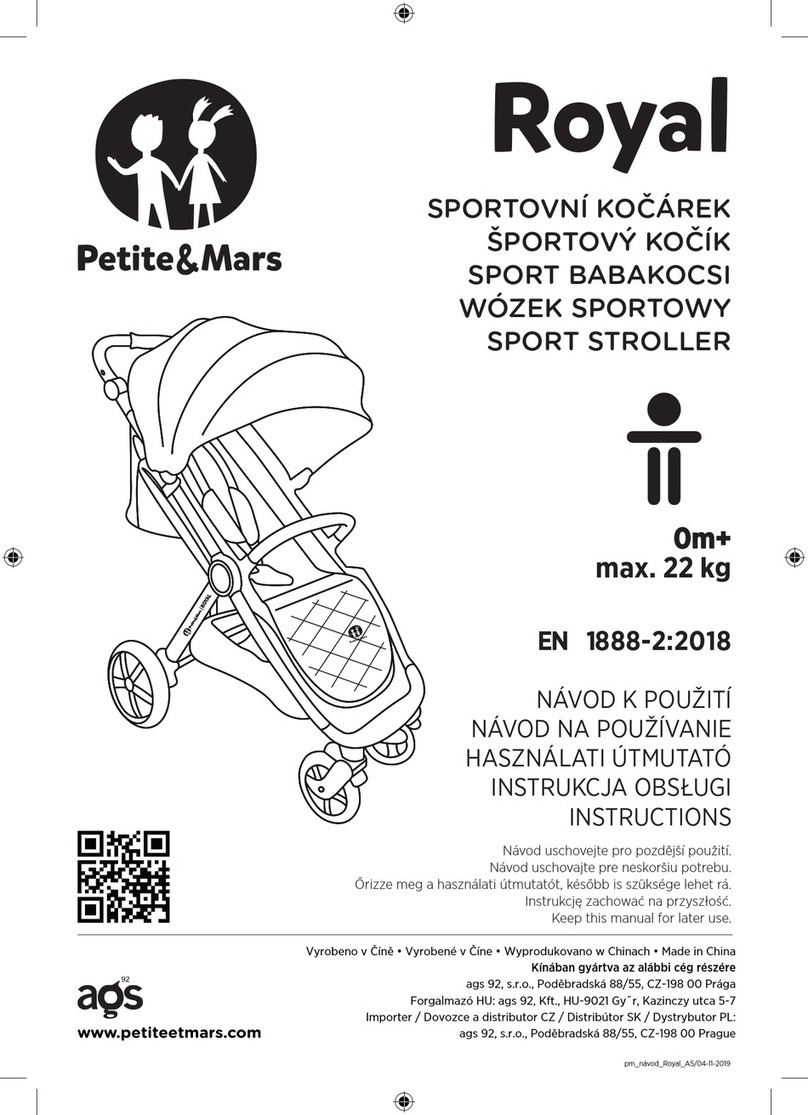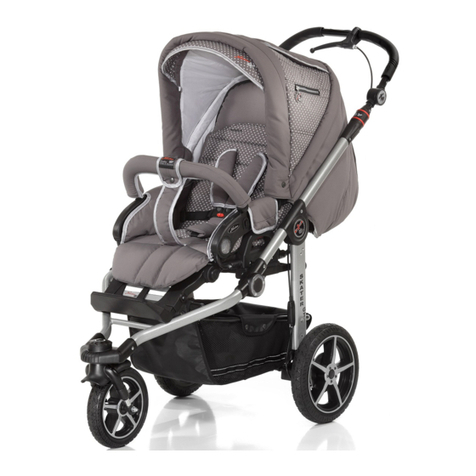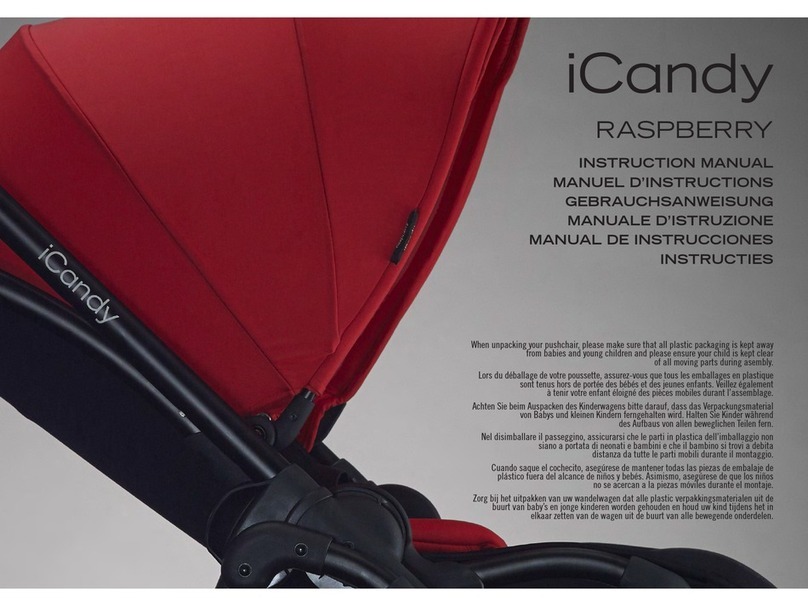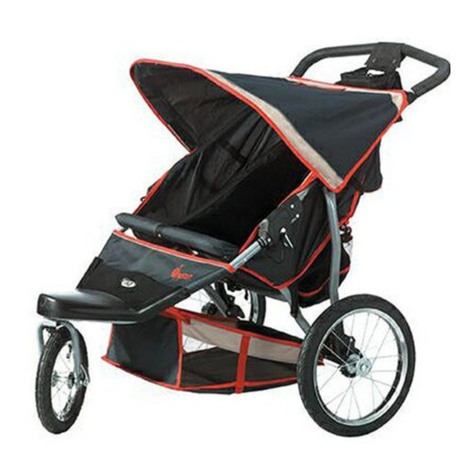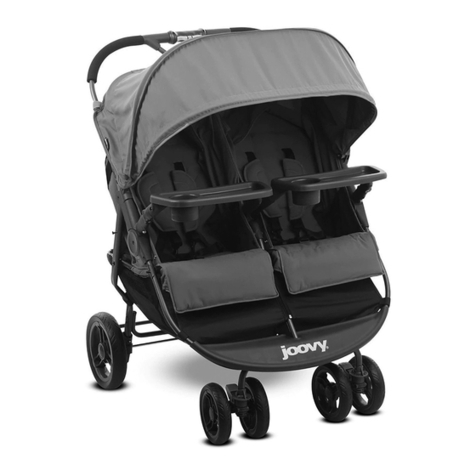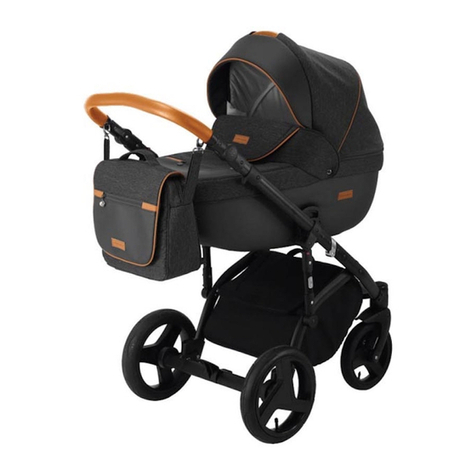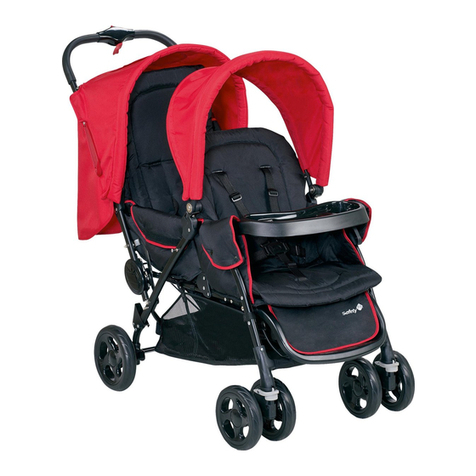Vitea Care PROMYK User manual

1
USER’S MANUAL
PROMYK
Children’s rehabilitative stroller
DRVG0L
Edition AM 05.2019

2
Table of Contents
1. Introduction..................................................................................................................................... 3
2. Product description.......................................................................................................................... 3
3. Application...................................................................................................................................... 5
4. Contraindications............................................................................................................................. 5
5. Application...................................................................................................................................... 5
6. Safety of use.................................................................................................................................... 8
7. Everyday use and maintenance ..................................................................................................... 10
8. Technical parameters..................................................................................................................... 15
9. Symbols......................................................................................................................................... 15
10. Contact details........................................................................................................................... 17
PLEASE READ CAREFULLY BEFORE USING WHOLE OF INSTRUCTIONS

3
1. Introduction
Thank you for choosing our product. We are deeply convinced that it will meet your expectations.
Please read this document before first use. This manual is passed in order to provide the necessary
information for the safe use of the device. The correct application of the recommendations will
contribute significantly to extend the durability and aesthetics of the product. We want to emphasise
that constantly we are trying to improve the quality of our products, which may result in minor
changes that are not included in the manual.
2. Product description
Illustration 1.
1. Handle
2. Lever for changing the seat angle and backrest
3. The side lock
4. Rear wheel
5. Canopy
6. Head stabilizer
7. Safety belts
8. Front guard
9. Wedge
10. Foot stabilizing belts
11. Footrest
12. Front wheel
1
2
3
4
5
6
7
8
10
9
11
12

4
Elements that should be inside the packaging:
Illustration 2. Stroller
Illustration 3. Front guard
Illustration 4. Canopy
Illustration 5. Head stabilizer
Clips
Handle

5
Illustration 6. Sleeping bag
Illustration 7. Abduction wedge
3. Application
The stroller is designed for children with disabilities and / or dysfunctions movement activities as a
result of damage of the CNS Central Nervous System. It can be used in children with CP Cerebral
Palsy, myelomeningocele, muscle disorders, dysfunctions of the lower limbs. The maximum users
weight 75 kg.
4. Contraindications
Contraindications against sitting position.
5. Application
•After unpacking the box, check if it contains all parts in accordance with the list of elements
set out above.
•Ensure that all components have no visible damage. If any doubts, please contact the
manufacturer.
•Do not use the stroller until all parts are properly connected.
Maintance - Please refer to illustration 1.
UNFOLDING THE STROLLER:
•Unfold the stroller by pulling the frame with the handle to guide the stroller backwards
(Illustration 8.). Then set the stroller backrest to the same position. To do this, unlock the side

6
Illustration 8.
Illustration 9.
Clips
Illustration 12.
levers (by turning them so that they are horizontal).
•To prevent unplanned stroller movement, block the rotation of both rear wheels (activate the
foot brake –Illustration 16.).
•When the frame and backrest are set at the desired angle, lock the levers - turn them to a
vertical position - one lever pointing down, the other up.
•The stroller frame is equipped with a side block. To lock the side frame, slide the lock eye
onto the free end of the frame (Illustration 10. and 11.)
Illustration 10. Illustration 11.
•The barrier should be placed in the holes of the frame, and then attach the seat to the frame by
means of clamps with pin (Illustration 12.).
Lever for changing the
seat angle and backrest

7
•Make sure that the barrier is properly fastened.
Illustration 13.
•Then mount the headrest. To do this, unfasten the head stabilizer Velcro, choose the
appropriate setting, and then pull it to the back of the Velcro through the holes in the upper
part of the backrest upholstery, then fasten it.
•To attach the canopy, slide the canopy attachment from top to bottom into the guide on the
stroller frame (Illustration 13.).
•Sleeping bag mount if only the child is properly fasted with the seatbelt (Illustration 15).
•To mount the sleeping bag, start from the bottom by hooking it on the footrest.
•The upper part of the sleeping bag is equipped with Velcro which should to be attached to the
side frames of the stroller.
Illustration 14. Illustration 15.
FOLDING THE STROLLER
•To fold the stroller, remove the canopy, front guard and abduction wedge.
•Unlock both side locks (Illustration 10., 11.).
•Lock the rear wheels (Illustration 16.).
•Unfasten the side parts of the upholstery and fold them inside the stroller (Illustration 15.).
Here attach canopy handles
Side upholstery

8
•After unlocking the lever on both sides of the stroller, fold the frame (pointing it downwards),
and then lightly press (Illustration 8., 9.).
•The footrest must be folded. To do this, loosen the wing knob and from the horizontal position
move the locking part to the vertical position.
•Then pull the footrest slightly up so that the blocking part goes to the other side.
•Make sure that the footrest is removed from the positioning holes.
WARNING! Failure to follow these guidelines can result in damage to the wheelchair.
6. Safety of use
WARNING!
a) Before using the stroller, refer to this manual and keep it for future reference.
b) Your child's safety may be compromised case of non-compliance of rules contained in
this manual.
c) Never leave the child unattended. Always watch the child when he/she is in the
stroller. Responsible for the safety of the child are catretakers.
d) The seat is not suitable for children under 6 months.
e) Always use the seat belts to avoid serious injuries caused by the child falling out or
slipping out of the stroller.
f) It is important to fasten seat belt properly and its adjustment to the user.
g) The seat and belts do not replace proper supervision of caretaker.
Illustration 16.
Illustration 17.
Illustration 18.
Wing knob

9
h) While adjusting the parameters of the stroller, the child should not be in a stroller.
i) All repairs must be carried out by qualified personnel and during warranty period only
by the manufacturer's service.
j) The stroller is not suitable for running or iceskating.
k) The stroller is designed for transporting only one child.
l) It is unacceptable to use the stroller, if you found visible or palpable damage, or worn
out parts and stroller parts indicates a potential risk of an accident (eg. Consumption
wheels, upholstery, cracks, etc.).
m)Always check before use if the stroller is properly unfolded. Ensure that all locks are
blocked before use.
n) To avoid injury, make sure that the child is away when the product is being folded and
unfolded.
o) When moving the stroller through doors and other passages, make sure that on both
sides there is enough space to avoid injury of hands or damage the stroller.
p) Do not allow your child to play with this product.
q) Do not allow your child to stand on the stroller or footrest. The stroller might fall over
and hurt the child.
r) When in motion, always hold the handle of the stroller.
s) Be especially careful while using the wheelchair near to steps and stairs.
t) The stroller is not intended for use on stairs and escalators.
u) Do not move the stroller if a child is sitting in it.
v) Do not to move the stroller by holding the front guard. If there is a need to move your
stroller, you should hold the fixed elements of the frame.
w) In order to avoid accidental rolling off the stroller, always put on the brakes and turn
on the lock of driving direction when the stroller is stopped, when patient get in, get
off, changing the position.
x) Do not let the child stand on the footrest. Never leave the stroller unattended on
sloping ground, even if the brakes are on.
y) The stroller is designed for children up to 75 kg.
z) Stroller should always be easy to fold out. In case of problems with unfolding. You
should re-read the user's manual or contact the manufacturer.
aa)Keep extreme caution while passing an obstacles. Extreme use of the stroller could
cause damage or destroy it.
bb) Never use the stroller as a seat for the transportation of people in cars, buses or any
motor vehicles.
cc)During transport (eg. In the trunk), do not burden stroller, it may weaken or damage its
structure.
dd) Do not leave the stroller with the user close to open sources of fire.
ee)Be aware that the surface temperature of the upholstery and the frame parts may be
increased after exposure to the sun or other heat source.

10
Furthermore, with low temperatures there is a danger of overcooling metal parts of
stroller. It may cause burns or frostbite parts of the body.
ff) Keep caution while moving on sloping surfaces. The maximum allowable slope angle
up and down is 5%.
gg)With the stroller you can only use on surfaces where all four wheels touching the
ground.
hh) Stroller is designed for use indoors and outdoors only on paved and even surfaces.
ii) Use of the product i.e. The icy, wet, greasy, strongly gritty surfaces is unacceptable - it
creates a risk of falling.
jj) It is extremely important to keep all strollers components clean in order to maintain
the product parameters.
kk) Do not add additional loads (bags, etc.) on the stroller handles.
ll) Storing the stroller in areas with very high humidity (baths, laundry, etc.) or in the
open air, also the lack of hygiene causes rapid loss of operating parameters and
aesthetic of the product.
mm)Accessories, which were not approved by the manufacturer are not included in this
manual, cannot be used.
nn) Do not leave the child in the stroller for longer, because persons with neurological
affections who stay in unchanged positions may experience problems with skin
nourishment and cause bedsores.
oo) When the footrests will not be removed before folding the stroller, itcan cause
damage.
During use, handing of the product and during its assembly, regulating mechanisms, it might
happen trapping and / or squeeze user's or caretaker's body part in holes / gaps between the
elements. Perform these steps with extreme caution. After adjustment, stabilize the position
by carefully tightening the nuts / bolts.
7. Everyday use and maintenance
SWITCHING ON BRAKE
•The rear wheels are equipped with brake system.
•To prevent unplanned movement of the stroller, switch on brakes on two rear wheels.
(Illustration 19.)

11
Illustration 20.
Illustration 19.
•To do this, move the brake lever to the left (Illustration 20.).
•To unblock the brake, reverse the movement to apply the brake.
LENGTH OF FOOTREST ADJUSTMENT
•To change the length of the footrest, remove two footrest locks on both sides of the footrest
(Illustration 21.).
Illustration 21.
•Select required length on the footrest, by using the holes in footrest frame.
•Next insert the footrest locks into the holes.
•It is important that each side footrest locks were placed in holes at the same height.
FOOTREST REGULATION
•To change the position of the footrest up or down, move the attachment element. To do this,
lift up the knob and then put in the appropriate hole (Illustration 22.).
•
Illustration 22.
Brake lever
Footrest lock
Knob
Fastening element

12
BELTS SYSTEM
•The stroller is equipped with a stabilizing belts whose length can be adjusted (Illustration
20.).
•Settings of all stabilizing elements should be discussed with your doctor or physiotherapist.
•To ensure safety, after placing the child in the stroller, caretaker should immediately buckle
them into stabilizing belts.
•Security system include three-point seat belts with central buckle and lap belt with buckle.
•Shoulder belts should run along the child body from the shoulders to the waist.
•Both elements of the buckle should be placed in the central fastener. To do this, press the
button on the buckle and place the elements (Illustration 24.).
•While placing elements of buckle into central buckle there must be a click. Only if click is
heard, three-point belts are properly fastened.
•To properly protect your child, adjust the length of the belt using the adjustment belt elements.
•To unfasten three-point belts, press the button on the central part of three-point seat belt and
unfasten the lap belt buckle.
ADJUSTING THE ANGLE OF THE SEAT
•The stroller is equipped with a lever to change the angle of the seat.
•To change the seat angle, turn both levers from the vertical position to the horizontal position.
•Grab the upper part of the backrest and move it up or down to set the desired angle.
•When the seat is adjusted to the desired angle, lock the levers on both sides of the stroller
(vertical position).
MOVING ON SLOPES
•While moving on slopes, use caution and reduce your speed.
•Do not move on too high slopes. The maximum allowable slope angle up and down is 5%.
Belts adjustment
elements
seat belt three-point
Shoulder belts
Seatbelt three-point
buckle
Illustration 23.
Illustration 24.

13
ENTRANCE TO THE THRESHOLD OR CURBS
•To enter stroller to the threshold or curb, it must be set so that the front wheels were set
on straight ahead threshold or curb and near to it.
•Then place a foot on the lock back of stroller, press lightly and push the handle down.
•The front wheels of stroller will lift slightly upwards, what allows to overcome the
obstacles.
•Once the front wheels are on the obstacle, raise the rear wheels by tilting the stroller
frontward.
PUMPING TYRE
(It applies to stroller fitted with wheels pumped)
Illustration 25. Illustration 26.
•Before pumping the tires, identify the type of valve which is located on the tire. This may be
one of the two valves shown in Illustration 25 and 26.
•Prest valve also has an additional small top, which must be loosened before pumping.
•After identifying the valve, prepare the pump designed to valve type.
•Most of the new pumps are equipped to service both Prest and Schrader valve. Many of them
let to reverse the tip. Smaller hole is Prest valve, Schrader valve greater. If the pump does not
support Prest, you will need to buy yourself one with the "Prest adapter", which is available at
any bike store.
•At this point, if the wheel is provided with a valve Prest, it will be necessary to unscrew the
top located on the vent. It is a small top, which can be unscrewed with fingers. When doing
this, the top should move upwards. Then valve is considered open.
•Then remove the plastic top from the valve and set it aside in a safe place. It is important to
not lose it, because the valves will get dirt, leading to difficulties in pumping and rapid air
loss.
•Place the nozzle of the pump to the valve and check if it stick properly. If it is needed, push
the pump to the valve to make sure that the air does not go to the sides.
•If the pump has a lever with clamp at the nozzle, tighten it. If the nozzle of the pump and valve
have a threaded tip, screw them together. As a result, air will be streamed directly to the inner
tube and the nozzle can not detach from the valve.
•At the beggining of pumping the pressure in tyres should be checked at some points. Check
tire pressure with your thumbs at the end of the tread. If it is possible, make only a millimeter
indentation. It means that the tire has enough air. If necessary continue pumping.
•After pumping, remove or unscrew the nozzle from the valve outlet while compressing it's
ends by thumb. It is recomended to do this quick enough in order to not loose too much air.
•For Presta valve, tighten previously loosened additional small top.
Schrader valve
Prest valve

14
•Screw the plastic top on the valve.
EVERYDAY USE AND MAINTANCE
•Clean the plastic parts and the frame with damp cloth without the addition of detergents or
other similar ones.
•Systematically remove the dirt from the movable elements of the stroller (screws, resistance
mechanisms).
•Regularly remove dirt from the upholstery with a damp cloth.
•Keep clean all strollers elements for to save functional parameters of the product.
•Storing in rooms of very high humidity (baths, laundries etc.) or in the open air, in the
combination with the lack of hygiene will cause the fast loss of functional and aesthetic
parameters.
•Do not expose the wheelchair on to extreme weather conditions (rain, snow very strong sun),
because certain parts can change color.
You must not use:
•solvents,
•toilet detergents,
•sharp brushes and hard objects,
•detergents that contain chlorine,
•corrosive detergents.
Do not clean the exerciser with pressure or steam aggregates!
Frequency
Object of control
Comments
Before first
installation
Checking the technical
condition and all the elements
within the packaging.
Check if any elements have any visible
mechanical damage.
Before each use
Control of wheels, brakes, the
lock of driving direction.
The brakes can worn out, check the
condition of the brakes and the lock of
driving direction before each use.
You should also check the condition of
wheels and clean them from dust and sand.
Every two weeks
Screw and nut control
regarding their correct fixing.
Make sure if all the screws and top are
fixed tightly.
Every two months
Cleanliness and general
condition.
In case of mechanical damage contact the
producer immediately.
Once a month
Wheel axles
Wheel axles must be conserved, oil
between the axle and the hub a few drops
of lubricant.
Repair
•In case of reparation, please contact the producer.
Customer service
•If you have any questions or need help, contact the producer.

15
8. Technical parameters
Permitted user weight
75 kg
Stroller height
1260 mm
Backrest width
380 mm
Stroller width
600 mm
Stroller length
1420 mm
Front seat height
550 mm
Seat depth
460 mm
Seat width
390 mm
Backrest length
75 mm
Stroller weight
25 kg + / - 5%
Front wheels diameter
240 mm
Rear wheels diameter
240 mm
Type of wheels
Full
Material
Aluminum and steel frame
Maximum safe slope
Description of the environment in which the
product will be used
Temperature of storage and use
The humidity for the storage and use
From 30% to 70%
Serial number
Given on the producr
9. Symbols
Confirmation of compliance with EU standards
Manufacturer
Date of production

16
Read the user's manual
Warning
Catalog number
Serial number
Protect from humidity
Protect from sunlight
Permitted user weight
Maximum safe slope
Use inside and outside buildings
The product is intended to transport by car

17
The product is not designed for use as a seat to transport in a motor vehicle
The product is intended to the transport by plane
The possibility of fingers jamming
Allowable temperature limit
Do not stand on the footrest
10. Contact details
mdh sp. z o.o.
22/24 ks.W. Tymienieckiego Street
90-349 Łódź, Poland
tel. +48 42 674 83 84
fax. +48 42 636 52 21
www.mdh.plwww.viteacare.com
This manual suits for next models
1
Table of contents
Other Vitea Care Stroller manuals
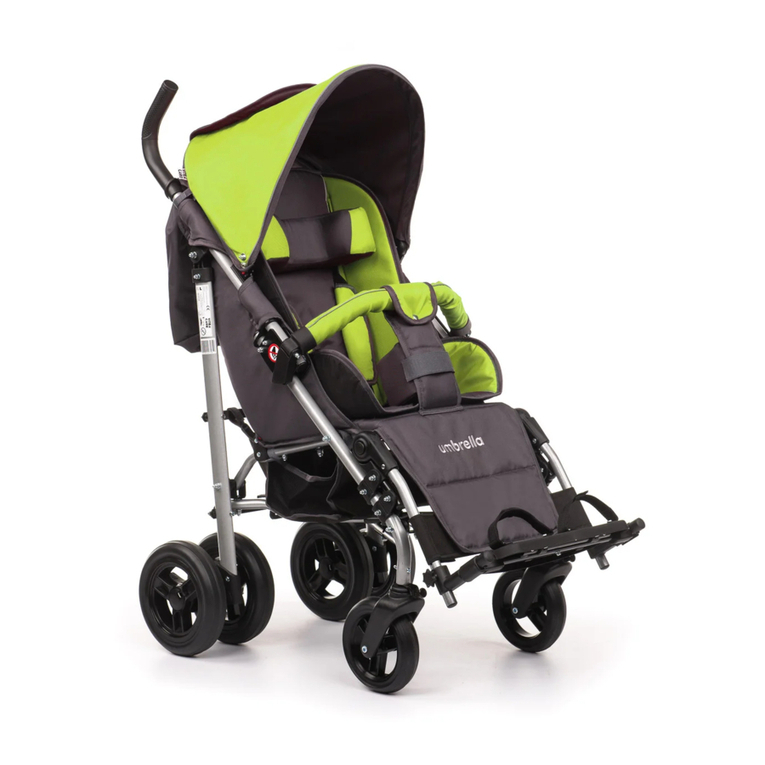
Vitea Care
Vitea Care DRVG0C User manual

Vitea Care
Vitea Care Junior Plus User manual
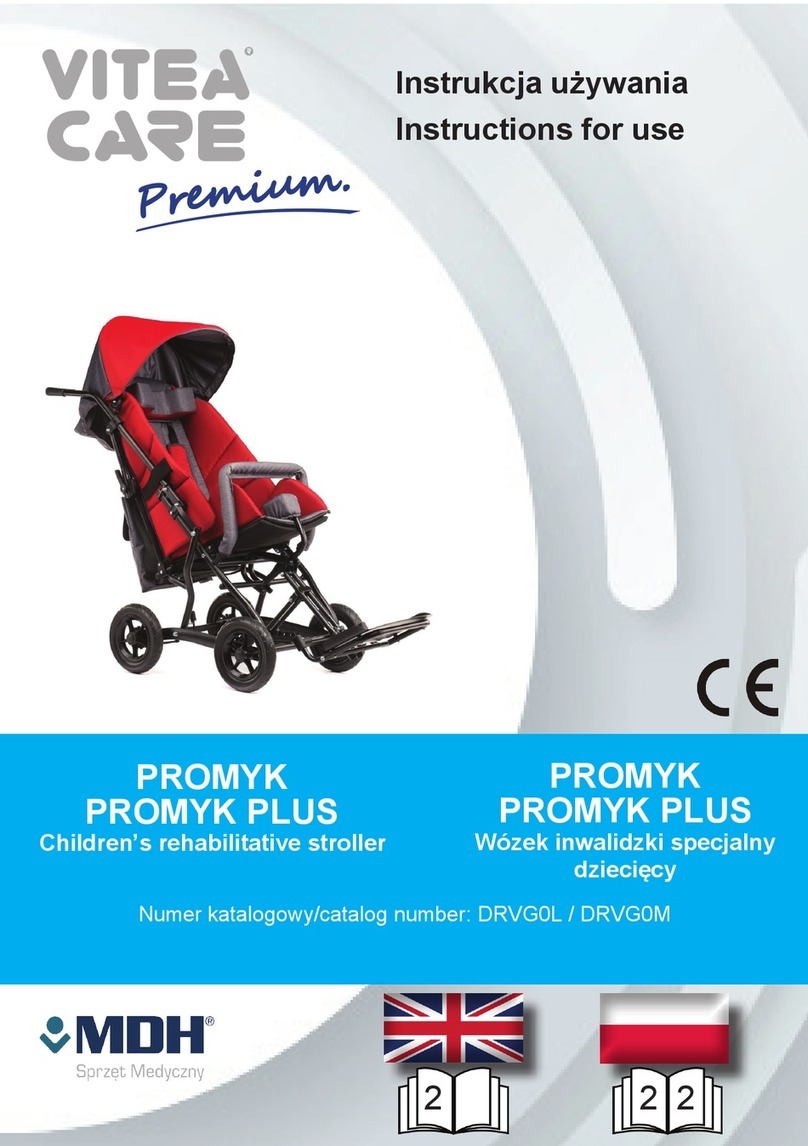
Vitea Care
Vitea Care PROMYK PLUS User manual
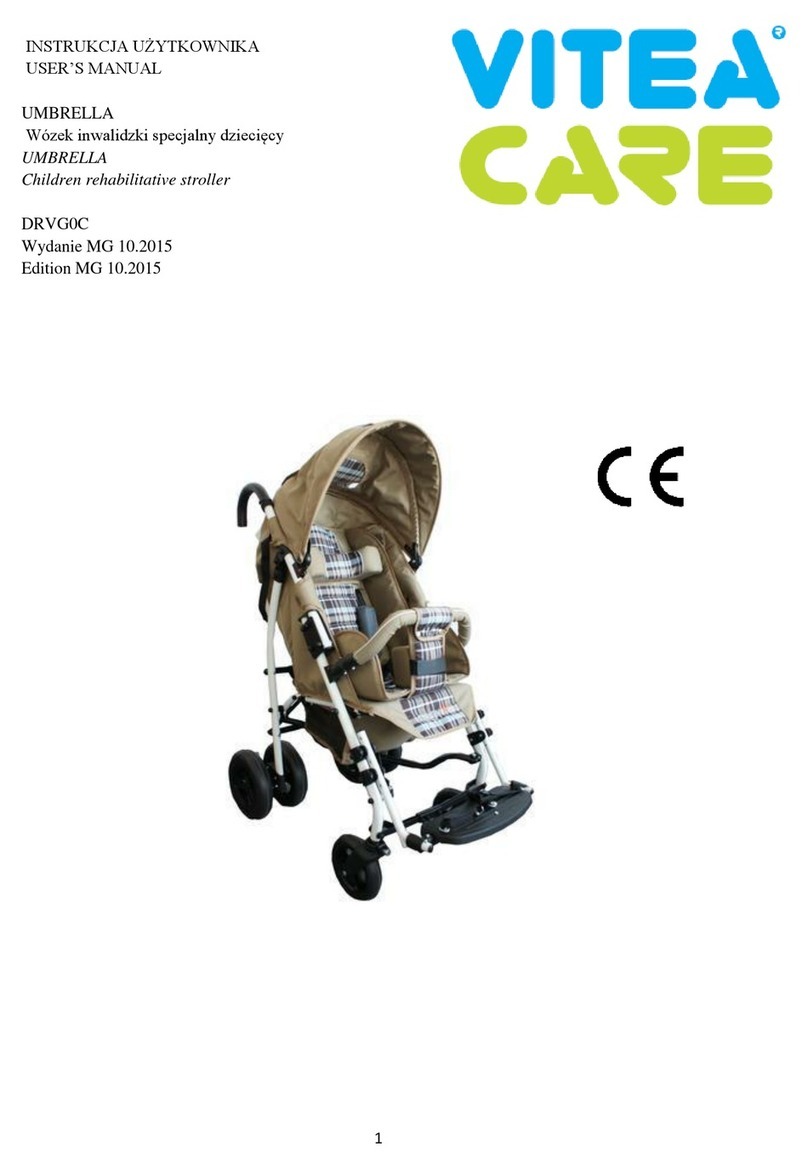
Vitea Care
Vitea Care UMBRELLA User manual

Vitea Care
Vitea Care Premium PROMYK User manual

Vitea Care
Vitea Care UMBRELLA User manual

Vitea Care
Vitea Care PREMIUM PROMYK SPECIAL PLUS User manual
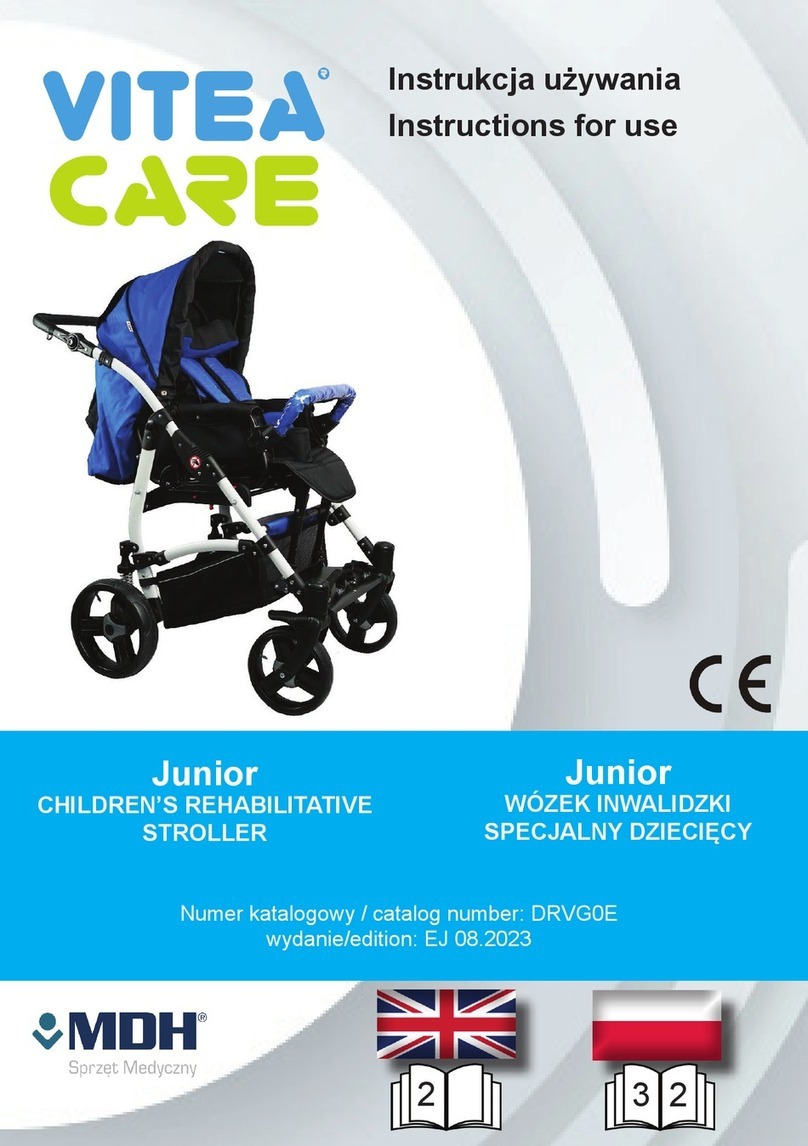
Vitea Care
Vitea Care MDH Junior User manual
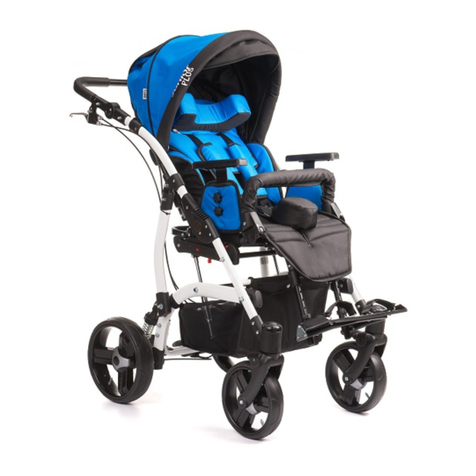
Vitea Care
Vitea Care Junior Plus 2 User manual
